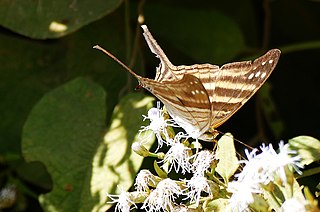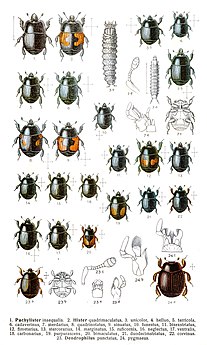
Convolvulaceae, known commonly as the bindweed or morning glory family, is a family of about 60 genera and more than 1,650 species of mostly herbaceous vines, but also trees, shrubs and herbs, and also including the sweet potato and a few other food tubers.

Filodes is a genus of moths of the family Crambidae. The genus was described by Achille Guenée in 1854.
Nipponosynuchus abnormalis is a species of beetle in the family Carabidae, the only species in the genus Nipponosynuchus.
Phaedinus is a genus of beetles in the family Cerambycidae, containing the following species:
Phaedinus abnormalis is a species of beetle in the family Cerambycidae. It was described by Tippmann in 1953.
Hybolasiopsis abnormalis is a species of beetle in the family Cerambycidae, and the only species in the genus Hybolasiopsis. It was described by Sharp in 1903.
Salbia sciagraphalis is a moth in the family Crambidae. It was described by Harrison Gray Dyar Jr. in 1914. It is found in Panama.
Gogana abnormalis is a moth in the family Drepanidae first described by Warren in 1897. It is found on Borneo, Sumatra and Peninsular Malaysia.
Pyncostola abnormalis is a moth of the family Gelechiidae. It was described by Anthonie Johannes Theodorus Janse in 1950. It is found in Namibia.
Psiloscelis is a genus of clown beetles in the family Histeridae. There are about 8 described species in Psiloscelis.
Chasmogenus is a genus of water scavenger beetles belonging to the family Hydrophilidae. The genus formerly contained 26 species worldwide until the discovery of new species recently. Currently, a total of 43 species is identified and documented, of which 18 occur in the Afrotropical region, eleven in the Neotropic, two in the Palearctic, three in the Australian, and five in the Oriental region.
Amauromyza is a genus of leaf miner flies in the family Agromyzidae. There are more than 60 described species in Amauromyza.
Psiloscelis subopaca is a species of clown beetle in the family Histeridae. It is found in North America.

Proteides mercurius, the mercurial skipper, is a species of dicot skipper in the butterfly family Hesperiidae. It is found in the Caribbean Sea, Central America, North America, and South America.

Marpesia chiron, the many-banded daggerwing, is a species of daggerwings, map butterflies in the family Nymphalidae. It is found in Central America, North America, and South America.

Stilobezzia is a genus of predaceous midges in the family Ceratopogonidae. There are more than 330 described species in Stilobezzia.
Psiloscelis perpunctata is a species of clown beetle in the family Histeridae. It is found in North America.
Monoclona is a genus of fungus gnats in the family Mycetophilidae. There are about 18 described species in Monoclona.

Ceroplastes is a genus of wax scales in the family Coccidae. There are more than 130 described species in Ceroplastes.







